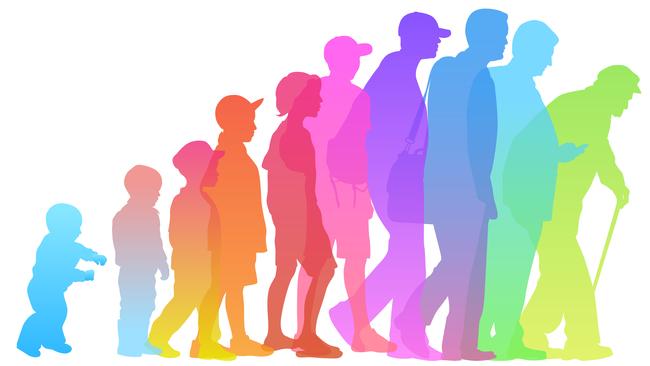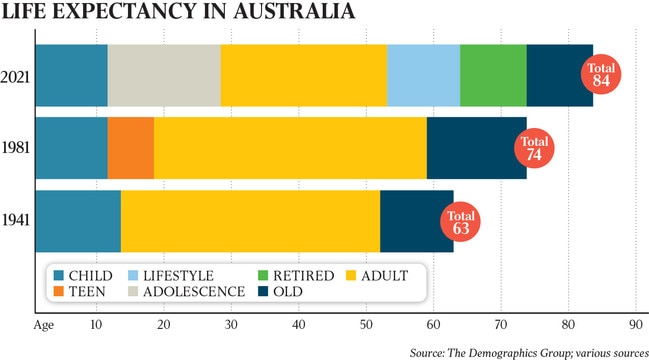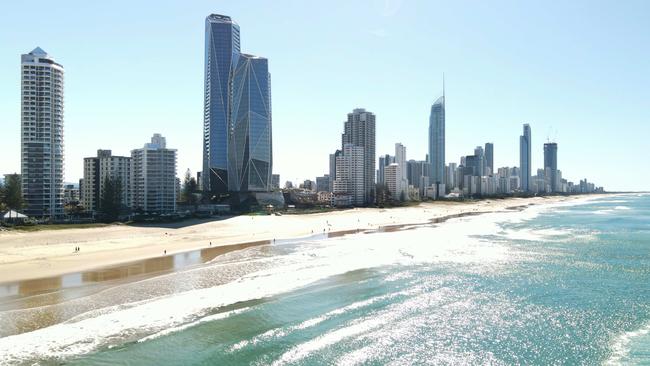Baby boomers and what the future holds after Covid-19
Baby boomers will spring to life once the pandemic has passed.

One of the greatest gifts to the Australian people of the 21st century is the gift of longevity. The average Australian today lives for 84 years, which is 21 more years than applied just 80 years ago.
No need for parents or grandparents from this era to provision for retirement because, well, most people died two years prior to becoming eligible for the pension at the age of 65.
This was an arrangement that no doubt well suited federal treasurers at the time.
Even in the latter decades of the 20th century the plan for retirees (born in the 1920s) was to work to the age of 65, have a bit of a workplace send-off, buy a caravan and, as one imminent retiree told me in the early 1990s, “toddle around Australia”.
It was this generation that gave us our first variant of the common retiree known as the grey nomad. More varieties blossomed over the years including the double-barrelled bucket-lister and the acronym-enabled OAP (old age person).

BABY BOOMER mountain
But underpinning this relatively benign view of the retirement years there was a blunt demographic reality. Not many Australians actually made it to the age pension eligibility age of 65 during the 20th century.
This wasn’t because they died young, although many did. It was more because their cohort was depleted by the Great Depression’s baby bust and it was then rendered relatively modest by the burgeoning baby boom and by a rising tide of (young) immigrants.
But from 2011 onwards the number of retirees in Australia has indeed surged.
And the reason it is in this year that the first baby boomers (born late 1946) reached the age of 65.
And so over the following decade (to 2021) all of those 1946-born baby boomer’s younger siblings, cousins and mates – born in the late 40s and early 50s – also tripped across the retirement line, which in the current year (2021) scoops up yet another batch of boomers born in 1956.
There are roughly 5 million baby boomers in Australia in 2021. This life form peaked a decade ago at 5.2 million.
About one-in-20 boomers died over the past decade. And about one-in-8 will die in the coming decade. You and I both know where this is headed.
Baby boomers are right now entering the retirement stage of the life-cycle that was previously occupied by 2.5 million pre-boomers. It is this ratio (2.5:5.0) that gives boomers their cultural (and political) oomph.
All the housing, infrastructure and aged-care services that were developed by the Australian nation to accommodate pre-boomer retirees between, say, 1995 and 2010 has to be doubled to accommodate the retirement tsunami of the baby boomers.

Boomers do it differently
But that’s not all. Boomers have cultural as well as demographic gravitas. They have done things differently at each stage of the life-cycle through which they have passed.
They rebelled against authority in the late 1960s, morphed into hippies in the 1970s, converted into (or flirted with) Gordon-Gekko’s rampant capitalism in the pre-crash 1980s, and then quietly slid into a sea-change situation in the late 1990s.
This lot isn’t going to retire as previous generations retired. The boomers are the first generation of retirees who witnessed their parents age progressively through their retirement years.
Evidence of the ageing process exists in the family photograph album. Previous generations of retirees died early in retirement (if they made it that far).
And they had no template upon which to base their retirement thinking; they made it up as they went along.
The boomers have a plan for life’s later years. Or at least they had a plan until the coming of the coronavirus. Their plan was, for many, to work in retirement, to remain active, to build their super, to downsize, to leave a legacy inheritance and to remain independent for as long as possible.
Indeed the boomer’s plan was to reimagine life’s later years.
First-wave boomers breached the retirement line a decade ago, but they didn’t retire en masse, cash-in on the value of their big-city property and then make a beeline for the sunshine state. Many remained in the workforce.
Work-on baby boomers worked on partly because they wanted to build their nest eggs, but also they worked on because they could.
Boomer retirees are less likely to have worked in the kind of blue-collar jobs that wear out bodies by the age of 65.
Rise of the new retiree
Indeed today’s baby boomers are the first generation of retirees who are (tertiary) educated, opinionated, articulate and who have time on their hands.
This is a dangerous combination for a property industry that must deal with a prickly variant of the baby boomer known as the activist retiree. Here’s a cohort determined to put their later years to the common good by protesting (seemingly) any and all property development.
Oddly, after unsuccessfully protesting a development project some activist retirees have no compunction about being first to sign-up for their new digs.
The coronavirus impact will likely extend from 2020 to the early months of 2023 before a sustained recovery is evident. This is a sufficient time frame for boomers to rethink their rest-of-life plan.
Life’s too short. How many good years do I have left? Why am I working on? As soon as the cruise industry weighs anchor I’m off!
And so the post-Covid retiree market well could kick off from 2022 onwards as freedoms return and as boomers increasingly exit the workforce. The Australian migration north to the Gold Coast by retiring baby boomers mimics the sunbelt drift south by American seniors in their Miami model.

In a post-Covid world
The post-Covid world delivers an opportunity to downshift, to downsize, to cleanse the mind, to free the spirit, to cast aside the clutter, the accoutrement, the accumulations of a family life lustily (meaning robustly) lived for 40 years.
A deadly pandemic isn’t so much an interruption to everyday life as it is an inflection point after which consumer behaviour is apt to change.
This is evident in the property boom currently underway, and which is being supported if not led by millennial upgraders.
In the post-Covid world consumer sentiment is sure to embrace home security and perhaps perimeter (electronic) security for the family home.
Perhaps lifestyling baby boomers – never use the “r” word when marketing to boomers – will seek out an entirely new script for life’s later years.
The late-30s and early-40s millennials are going through a revelation about the intrinsic value of a separate house on a separate block of land in suburbia and the regions.
In order to make such choices they’re forsaking the inner city, inside of the goat’s cheese curtain, and are now reinventing themselves as work-from-home Zoom-Room aficionados.
If I am right about boomers viewing the pandemic as something of a Control-Alt-Delete moment then they may take the opportunity to downshift not so much into a suburban townhouse but to a minimalist no-fuss apartment. Indeed the kind of property no longer prized by family-minded millennials.
The kind of inner-city property that post-Covid baby boomers might find attractive would be secure – to assuage insecurity fears post Covid – have a spare room for visiting grandchildren and capacity for grandma to host Christmas lunch for an extended family (dining room expands on to the terrace.)
Whether this happens or not is not the point; that’s how downshifting would-be grandmothers’ minds work.
Outlook
And so beyond the Covid horizon in the 2020s there is sure to emerge a new life form, a new market for the property industry, the bucket-listing baby boomer retiree looking for security, for lock-&-leave freedom of movement, in a property located in sunny climes or in the sophisticated inner city.
No doubt some retiring baby boomers will embrace sea-change and treechange in the regions.
Others are likely to stay put ramping up security, making over their once vanilla properties into sophisticated lifestyle haciendas in the suburbs.
The driving force behind the next generation of retirees will be a desire to reset the agenda, to extract value out of every minute of every day: to live life to its fullest.
After all, the coronavirus pandemic did take two or more years off the boomer’s remaining good years. There’s not a moment to lose. It’s time to cut loose, footloose, put on your Sunday shoes! The post-Covid 2020s will be the decade of the (dancing) baby boomer retiree.
Bernard Salt is executive director of The Demographics Group; data by data scientist Hari Hara Priya Kannan





